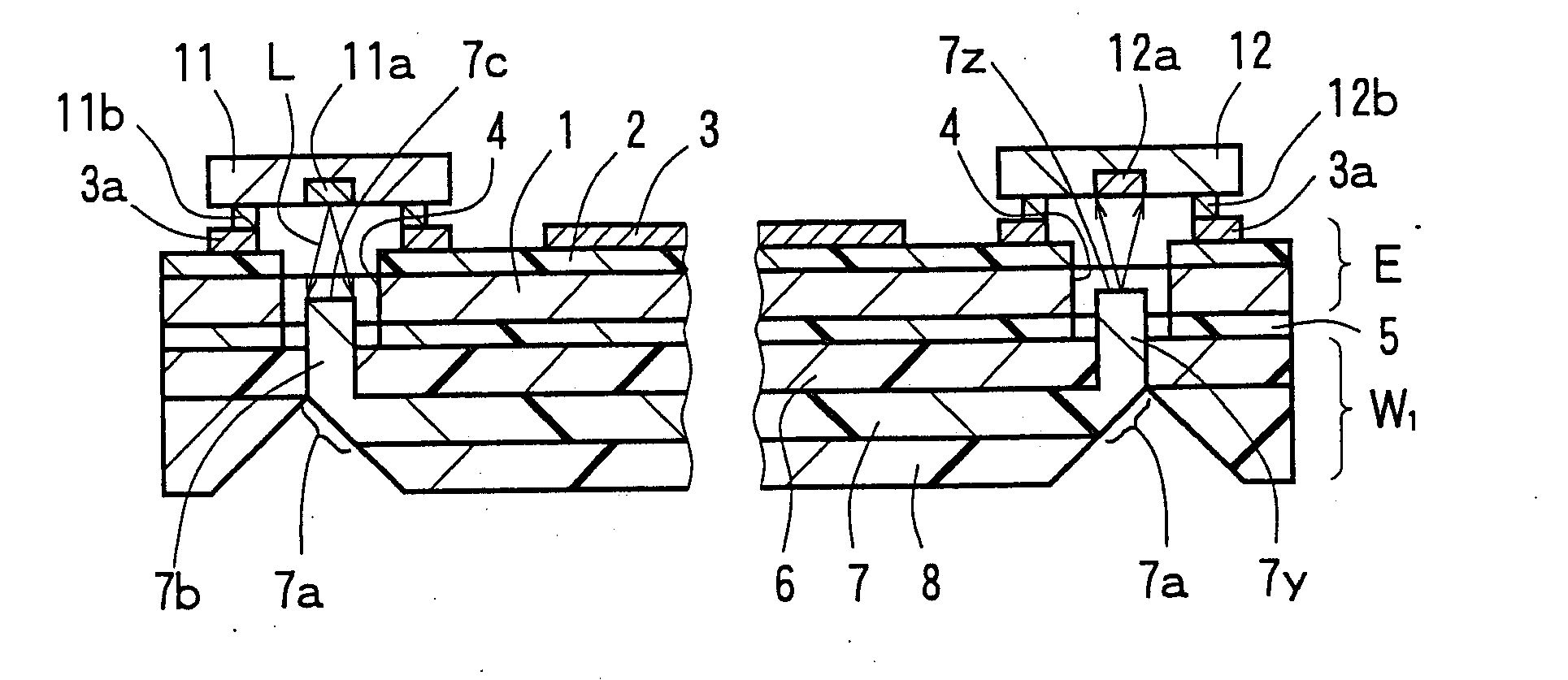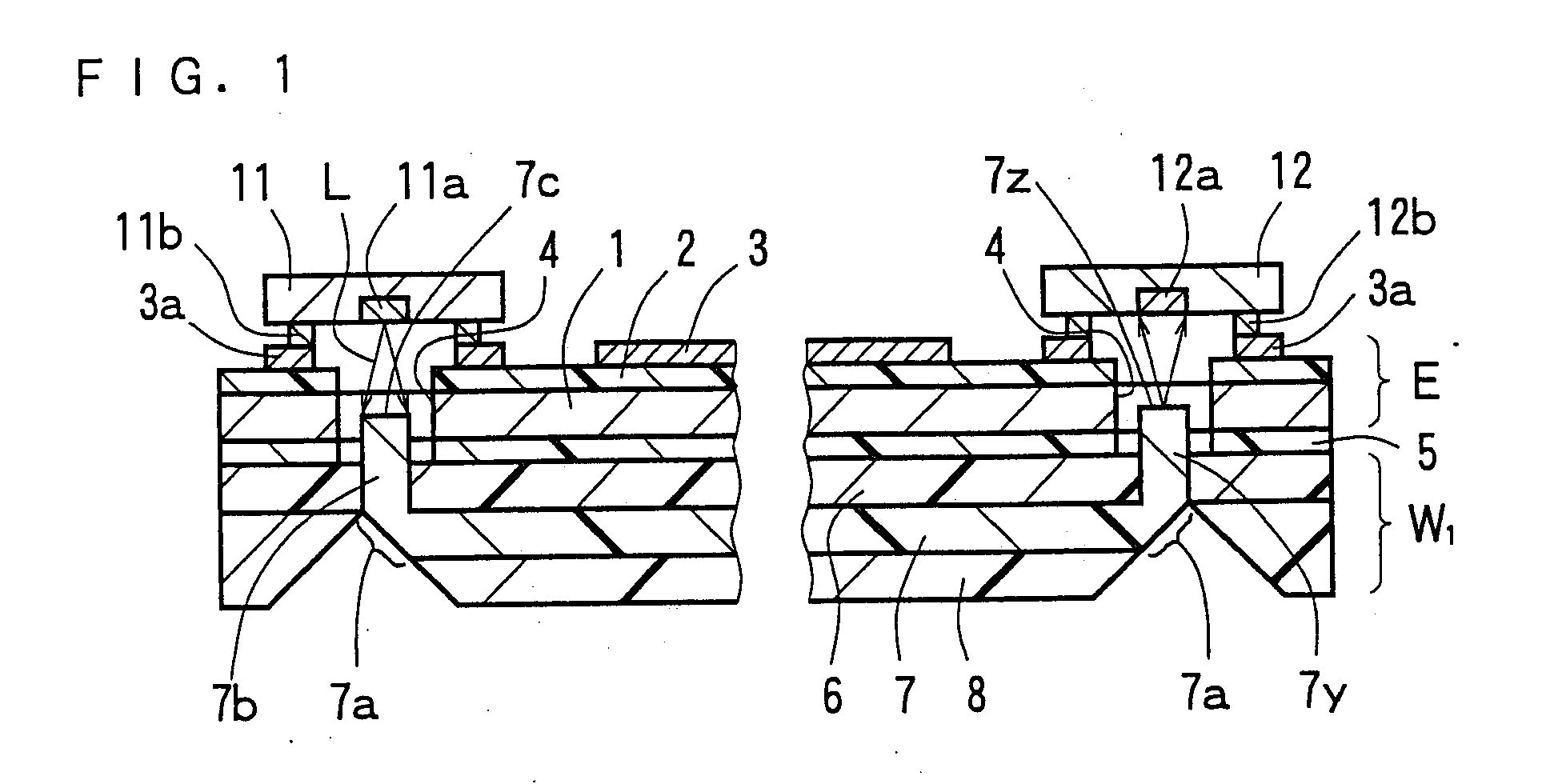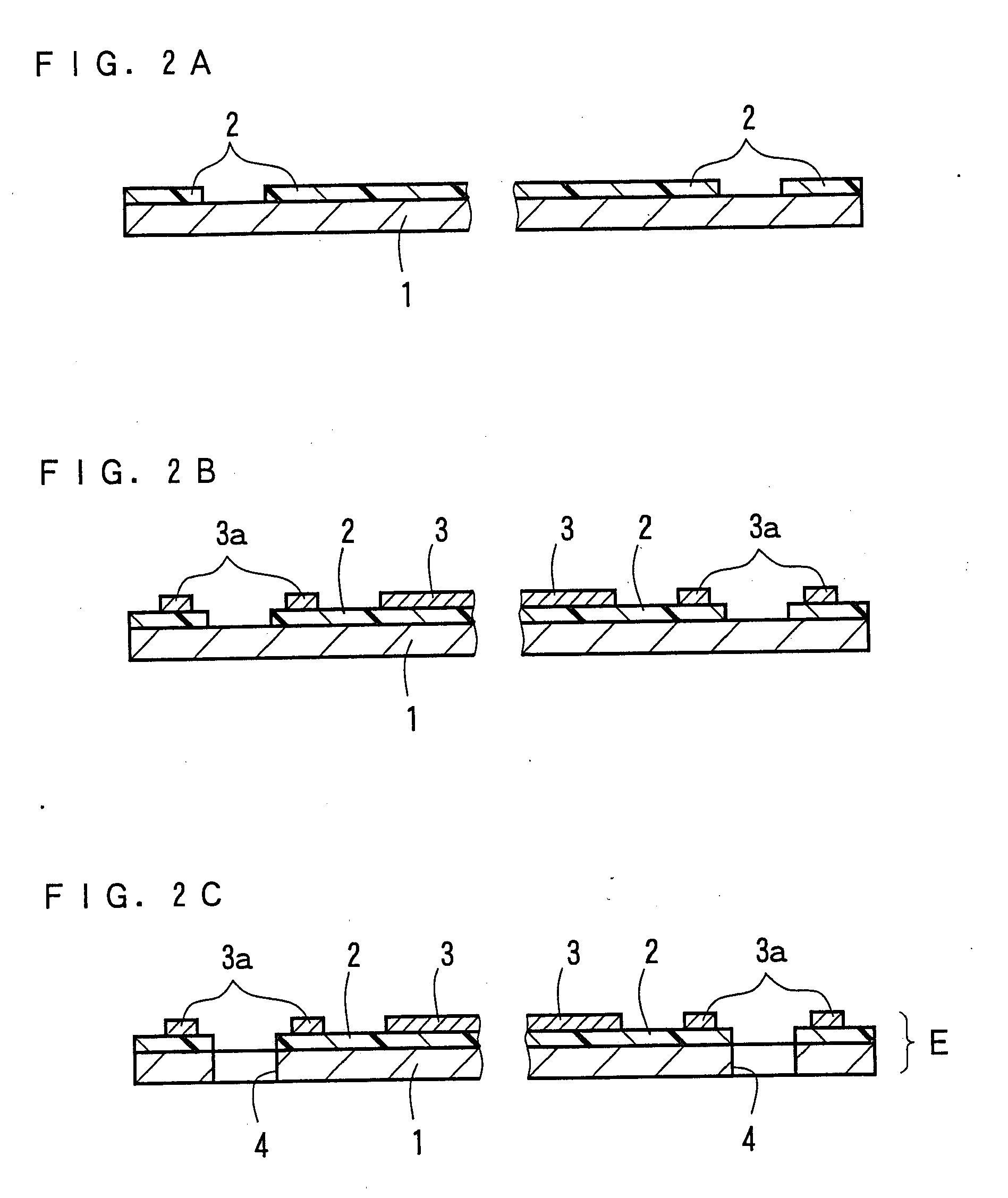Opto-electric hybrid module and manufacturing method thereof
a hybrid module and opto-electric technology, applied in the direction of optical elements, circuit optical details, instruments, etc., can solve the problems of increasing reducing accuracy, so as to reduce the propagation loss of light beams, reduce the distance between the distal end surface of the extension of the core and the optical element, and improve the reliability of light propagation
- Summary
- Abstract
- Description
- Claims
- Application Information
AI Technical Summary
Benefits of technology
Problems solved by technology
Method used
Image
Examples
Embodiment Construction
[0024]Next, embodiments according to the present invention will now be described in detail with reference to the drawings.
[0025]FIG. 1 shows an opto-electric hybrid module according to a first embodiment of the present invention. This opto-electric hybrid module includes: an electric circuit board E with an electric circuit 3 formed on the surface thereof; a light-emitting element 11 and a light-receiving element 12 both mounted on a first surface of the electric circuit board E on which the electric circuit 3 is formed; and an optical waveguide W1 bonded with an adhesive 5 to a second surface (or a back surface) of the above-mentioned electric circuit board E opposite from the first surface (or a front surface). The above-mentioned optical waveguide W1 is constructed such that an under cladding layer 6, a core 7, and an over cladding layer 8 are formed in the order named from the back surface side of the above-mentioned electric circuit board E. V-shaped notches are formed in porti...
PUM
| Property | Measurement | Unit |
|---|---|---|
| thickness | aaaaa | aaaaa |
| thickness | aaaaa | aaaaa |
| thickness | aaaaa | aaaaa |
Abstract
Description
Claims
Application Information
 Login to View More
Login to View More - R&D
- Intellectual Property
- Life Sciences
- Materials
- Tech Scout
- Unparalleled Data Quality
- Higher Quality Content
- 60% Fewer Hallucinations
Browse by: Latest US Patents, China's latest patents, Technical Efficacy Thesaurus, Application Domain, Technology Topic, Popular Technical Reports.
© 2025 PatSnap. All rights reserved.Legal|Privacy policy|Modern Slavery Act Transparency Statement|Sitemap|About US| Contact US: help@patsnap.com



